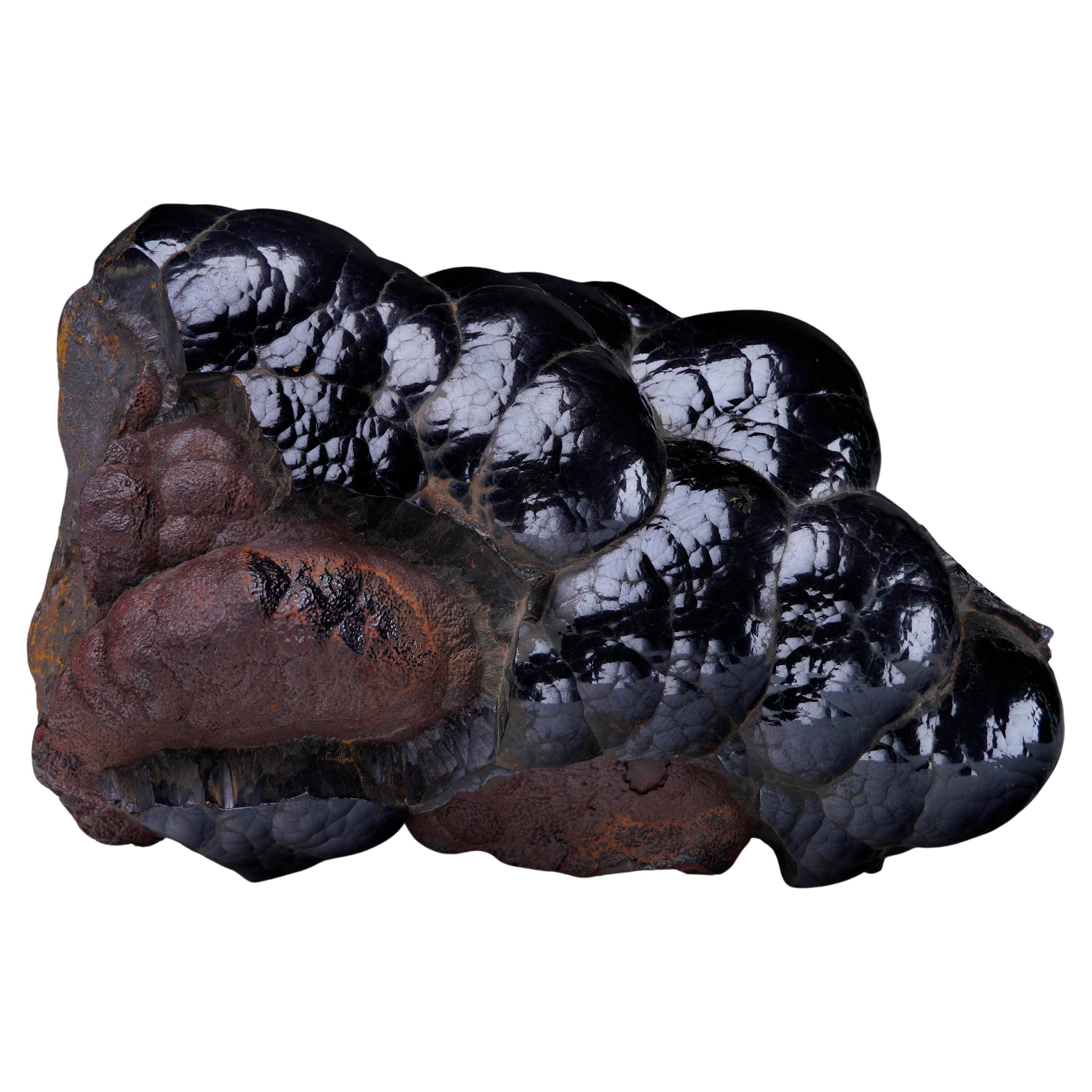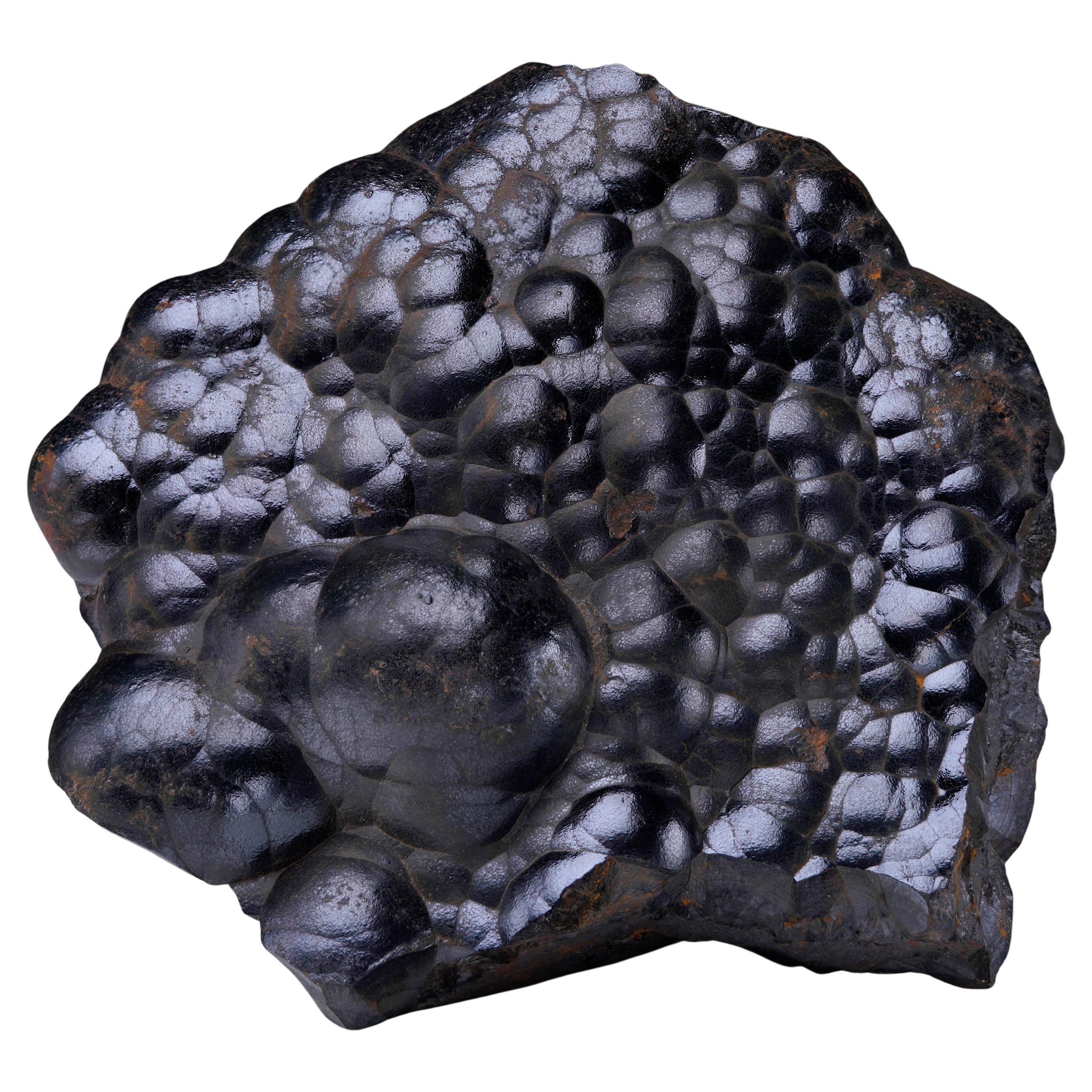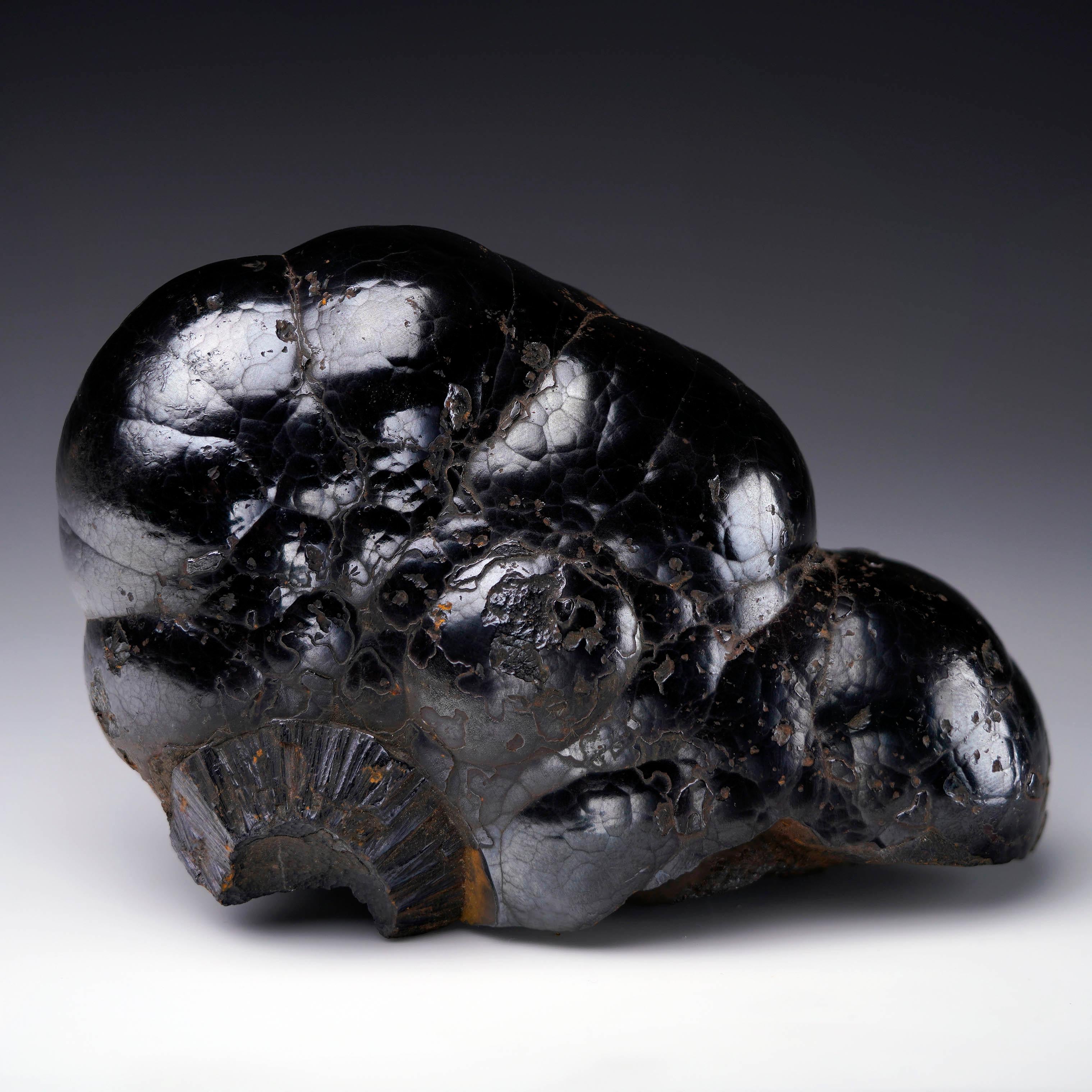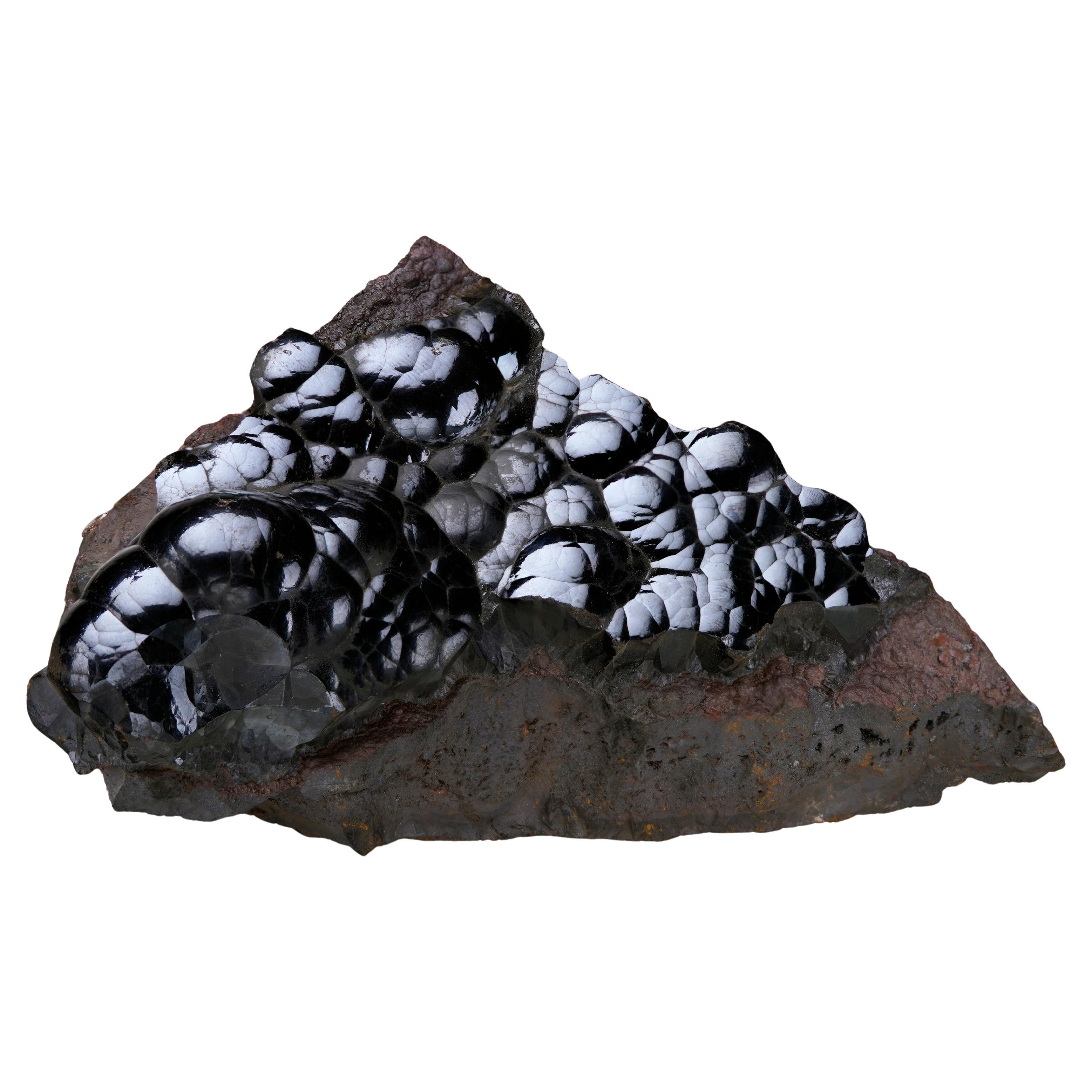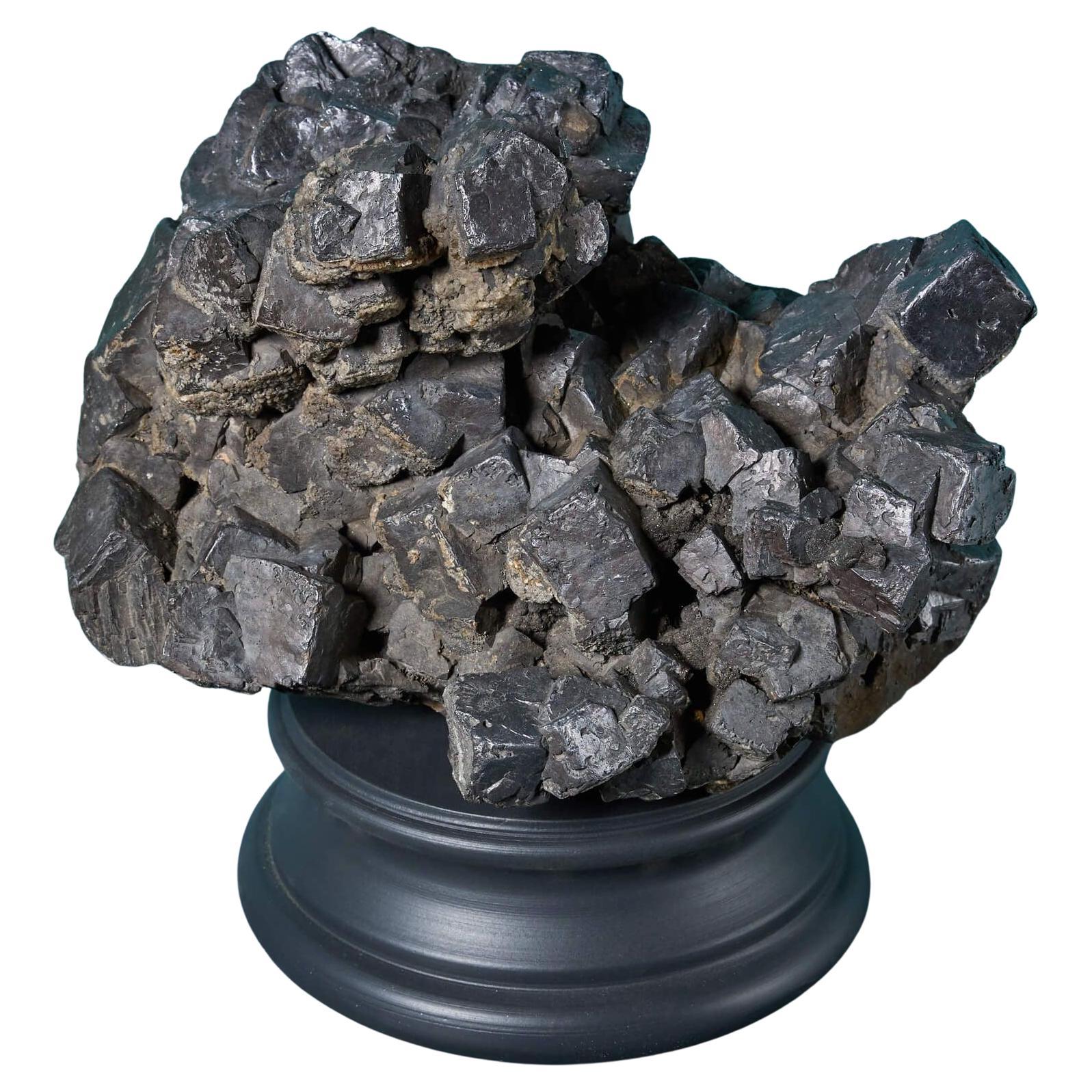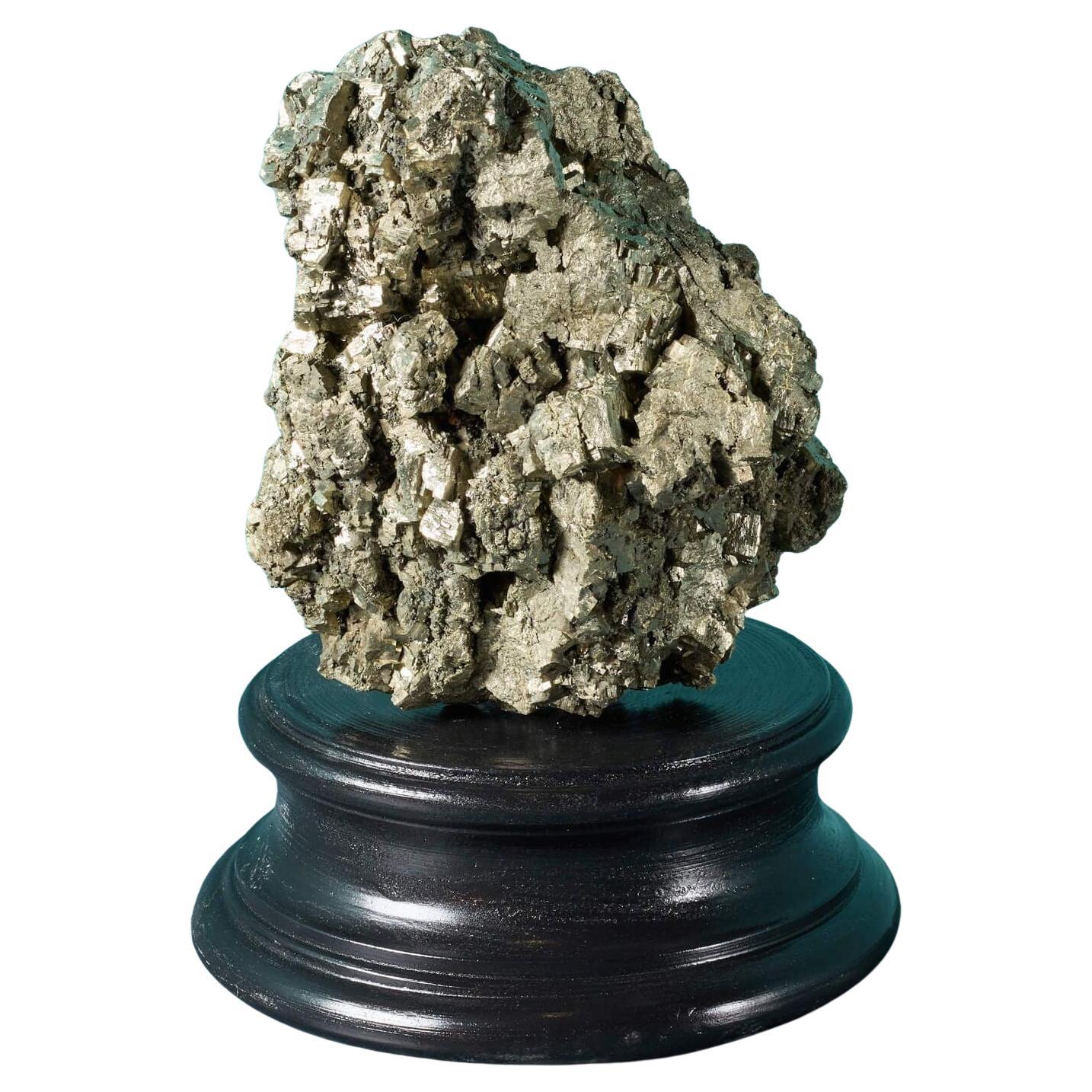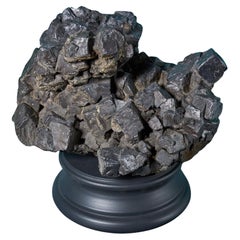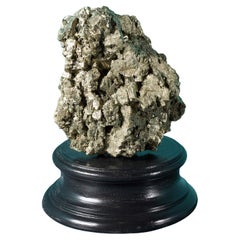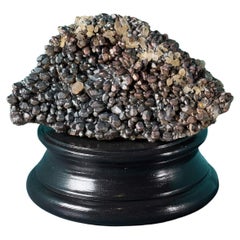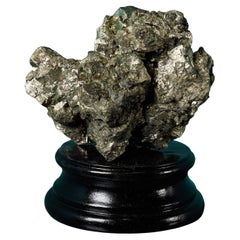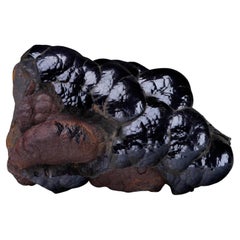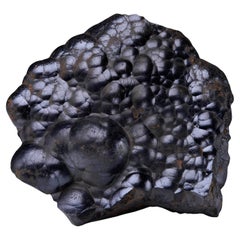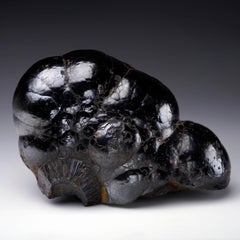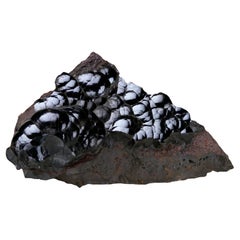Items Similar to Very Large Botryoidal Hematite Specimen
Want more images or videos?
Request additional images or videos from the seller
1 of 5
Very Large Botryoidal Hematite Specimen
$2,127.31
£1,575
€1,834.44
CA$2,975.57
A$3,256.25
CHF 1,707.75
MX$38,919.09
NOK 21,551.75
SEK 20,105.18
DKK 13,699.86
About the Item
A very large, naturally occurring botryoidal hematite specimen, presented on one of our exclusive painted plaster display plinths.
Hematite is the most important iron ore; in fact, iron makes up 70% of its composition. Its appearance can vary greatly, occurring in many natural forms including crystalline and fibrous. This specimen is an excellent example of the botryoidal form, characterised by its clustered, grape-like formations with rounded, bulbous shapes. Colours of hematite can vary from a very dark black to reddish-brown, this specimen showcasing a distinctive dark brown hue.
Thanks to its scale, this hematite specimen will make a striking display piece. It will look impressive on a sideboard, tabletop, or column, or alternatively a superb specimen in a collector’s cabinet.
Additional Information
Specimen only, ex. stand: H17.5 x W 26 x D12 cm, 8.35 kg
Comes with an exclusive large custom-made display plinth – ø25.5 x H 9.5 cm
- Dimensions:Height: 10.63 in (27 cm)Width: 10.24 in (26 cm)Depth: 10.04 in (25.5 cm)
- Materials and Techniques:
- Period:
- Date of Manufacture:Prehistoric
- Condition:This is a naturally made, prehistoric specimen formed by nature over millions of years. As such, formations, variations and markings are natural and are to be celebrated as features of each specimen.
- Seller Location:Wormelow, GB
- Reference Number:Seller: 9339761stDibs: LU2096339773372
About the Seller
4.9
Platinum Seller
Premium sellers with a 4.7+ rating and 24-hour response times
Established in 2006
1stDibs seller since 2016
766 sales on 1stDibs
Typical response time: 5 hours
- ShippingRetrieving quote...Shipping from: Wormelow, United Kingdom
- Return Policy
More From This Seller
View AllLarge Cabinet English Galena Mineral Specimen
Located in Wormelow, Herefordshire
A large cabinet mineral specimen of natural galena from Greenlaws Mine, Weardale, England, ex. private collection of Eric Holland. This stunning example comes presented on one of our...
Category
Antique 15th Century and Earlier English Natural Specimens
Materials
Natural Fiber
Large Natural Pyrite Specimen
Located in Wormelow, Herefordshire
A large natural pyrite specimen. Originating from 5/15 level Wheal Jane Mine, Cornwall, this native British pyrite has a lustrous exterior that catches the light beautifully.
Natura...
Category
Antique 15th Century and Earlier English Natural Specimens
Materials
Natural Fiber
Blacknite Quartz Cluster Specimen
Located in Wormelow, Herefordshire
An unusual blacknite quartz cluster specimen with covelline and bornite from Ambositra, Madagascar, presented on one of our museum-quality painted plaster bases. This striking and un...
Category
Antique 15th Century and Earlier Malagasy Natural Specimens
Materials
Precious Stone
Large Natural Cabinet Scale Pyrite Specimen
Located in Wormelow, Herefordshire
A large natural cabinet scale pyrite specimen, originating from 5/15 level Wheal Jane Mine, Cornwall.
This native British specimen has a lustrous exterior that catches the light bea...
Category
Antique 15th Century and Earlier English Natural Specimens
Materials
Natural Fiber
Large Natural Native Pyrite Specimen
Located in Wormelow, Herefordshire
A large natural pyrite of an unusual form sourced from the ex UK private collection.
This native British mineral has a lustrous exterior that catches the light beautifully.
Natural...
Category
Antique 15th Century and Earlier English Natural Specimens
Materials
Natural Fiber
Large Polished Mtorolite Specimen
Located in Wormelow, Herefordshire
A striking large naturally shaped mtorolite specimen originating from Zimbabwe.
This rare mineral, also known as chrome chalcedony, showcases an unu...
Category
Antique 15th Century and Earlier Zimbabwean Natural Specimens
Materials
Natural Fiber
You May Also Like
Botryoidal Hematite From Morocco – 374 Grams
Located in New York, NY
This striking Hematite specimen from Morocco showcases a brilliant high-gloss, mirror-like natural luster over the fluid, rounded contours of botryoidal crystal structure. The sculpt...
Category
2010s Moroccan Natural Specimens
Materials
Crystal
Botryoidal Hematite From Morocco – 1.15 Lb.
Located in New York, NY
This striking Hematite specimen from Morocco showcases a lovely natural luster over the fluid, rounded contours of clustered botryoidal crystal structure. The one-of-a-kind sculptura...
Category
2010s Moroccan Natural Specimens
Materials
Crystal
Botryoidal Hematite From Morocco
Located in New York, NY
This Hematite specimen from Morocco exhibits a mirror-like metallic luster across its fluid, botryoidal crystal surfaces. The rounded, organic contours give the piece a sculptural qu...
Category
2010s Moroccan Natural Specimens
Materials
Crystal
Botryoidal Hematite From Morocco
Located in New York, NY
This Hematite specimen from Morocco presents a dramatic interplay of form and luster, making it a standout for both scientific and aesthetic appreciation. The surface gleams with a n...
Category
2010s Moroccan Natural Specimens
Materials
Crystal
Gunmetal Hematite Crystal Mineral Specimen- England, UK
Located in Edison, NJ
Mankind has loved hematite for its sleek beauty and red undertones since its first discovery. It has been utilized as a reddening pigment by the ancient Egyptians, mined by the Etrus...
Category
Antique 15th Century and Earlier English Natural Specimens
Materials
Crystal, Metal
Goethite Vug From Morocco
Located in New York, NY
This striking Goethite vug from Morocco features a naturally hollow formation lined with shimmering botryoidal textures and rich metallic luster. Reddish brown tones contrast beautif...
Category
2010s Moroccan Natural Specimens
Materials
Crystal
More Ways To Browse
Specimen Collectors Cabinet
Large Mineral Specimens
Megalodon Tooth
18th Century Morocco
Branch Coral Specimen
Giant Natural Clam Shell Specimen
Labradorite Specimen
Megalodon Shark
Metal Topiary
Semi Precious Stone Sculpture
Sikhote Alin
Vintage Italian Grapes
Vintage Mosser Glass
Chambered Nautilus
Gogotte Formation
Rare Ammonite
Whale Tooth
Amethyst Geode Stalactites
